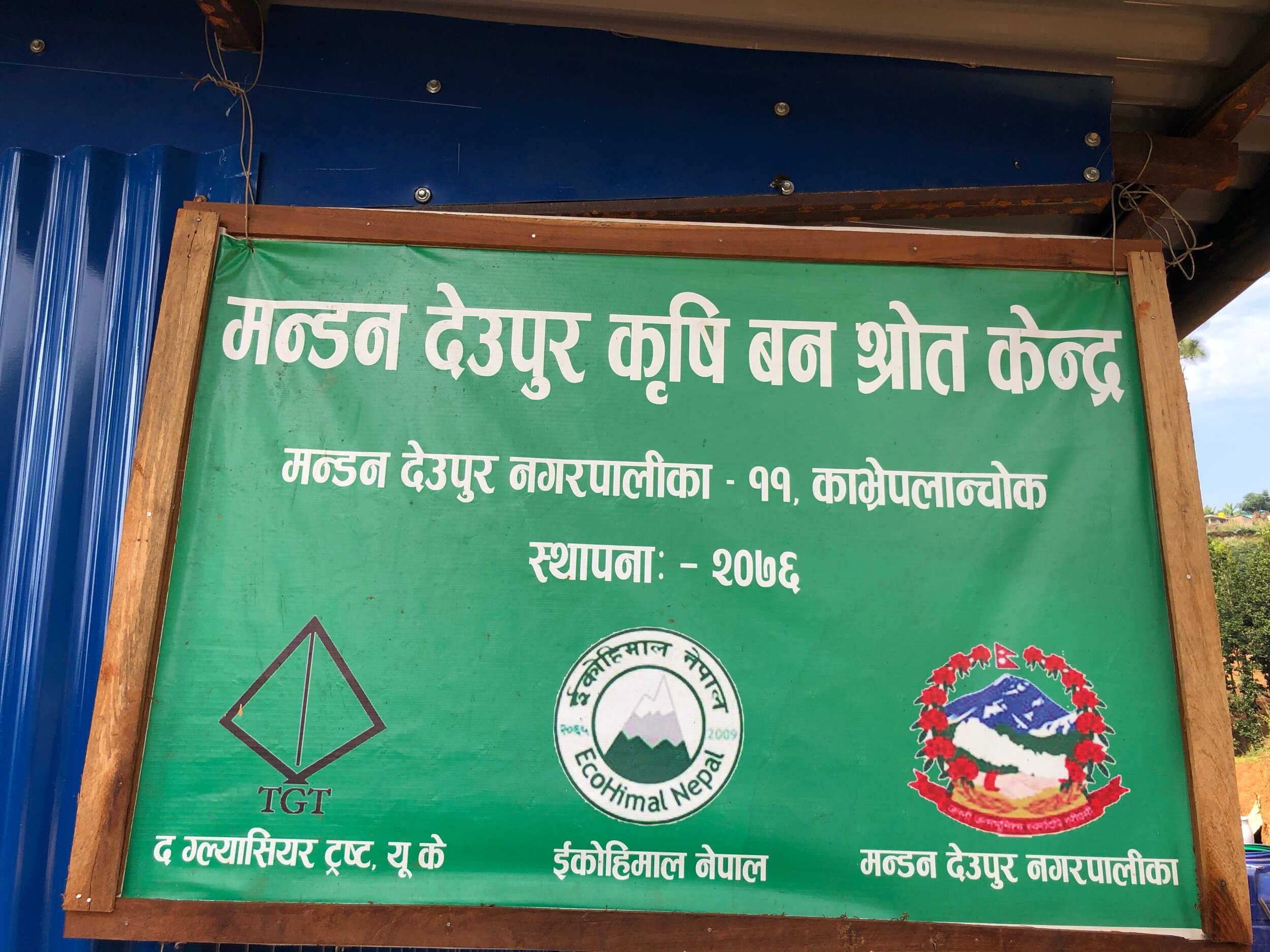Morgan is now in Nawalparasi with colleagues from our partner NGO HICODEF. In his sixth diary entry he reflects on their visit to the field to mark the launch of our new project Layer Farming for Adaptation.
Monday 21st
Early start to fly down to Bharatpur airport for a transfer to HICODEF’s offices in Kawasoti, Nawalparasi. It is noticeably hotter and more humid down here on the Terai.
I was welcomed by Surbir Sthapit and Shukra Raj Ojha who has just been appointed as Programme Coordinator for our newest project Layer Farming for Adaptation. We spent the rest of the morning reviewing the three year ECCLA (Enhancing Community Capacities for Learning and Adaptation to Climate Change) programme that wrapped up in July. ECCLA has made several positive impacts in the three target villages.
Climate resilient vegetable production has made huge progress, with over 20% of farmers now able to sell commercially in local markets for the first time. This is thanks to dedicated training, resource provision and the work HICODEF has done to create a route to market for the farmers.
Just before lunch we went through the plans for Layer Farming for Adaptation which will take us to the remote villages at the top of Siwalik hills in eastern Nawalparasi. We’re forecasting five years on this project, focussing on three villages in the first phase between now and summer 2021.
Layer farming is the practice of intercropping several crops that grow to different heights in a symbiotic way. Tall trees provide shade for lower bushes, which in turn protect root vegetables or pulses.
After lunch we travelled by jeep up to one of the LFA villages, Repaha to meet the local farmers group and to learn more about the coffee trees that are growing here. The coffee was planted around ten years ago, following a donation of seeds by an NGO. It grows well, but the farmers have no way of getting it to market. It therefore remains largely unkempt and when it fruits in January, cherries are either left on the tree or picked by children who eat them like sweets. Some farmers do pick a few kilos, the ones who like to drink coffee. They leave it to dry out (without removing the fruity layer) and then, when they fancy some coffee, remove the husk and roast over an open fire.
We found that some farmers already have an enthusiasm to commercialise their coffee - which is great news for the LFA project. Several have started their own nursery plots to grow coffee for transplanting later. They’re hopeful HICODEF and TGT can enable them to process the coffee to parchment stage and organise a route to market so that they can start selling and earning.
Like in Solukhumbu, investing in layer farming as a climate change adaptation strategy makes sense here. The trees provide shade, helping to keep things cool in the summer months. The income they can potentially generate will help too, they’ll have more money to invest in complementary adaptation strategies like water harvesting, polytunnels and insect pest control.
Layer farming also has a climate change mitigation effect; more trees equals more carbon sequestration.
Wednesday 23rd
After spending the night at HICODEF’s staff lodging’s in Kawasoti, we went by jeep again to the second village we’ll be working in for the LFA project. Lahape is at the end of a long, winding and bumpy dirt track at an altitude of 1,300m.
The journey took 4 hours and we passed several jeeps carrying 15 or more passengers. This is the public transport system round here, it costs around 300 rupee for a place on the jeep - same price whether you’re inside or on the roof!
From Lahape, when the clouds part, you get a spectacular view of the snowy Annapurna range, but the local landscape is dramatic in its own right; high forested slopes, terraces, long sheer drops and traditional houses complete with thatched roofs and mud walls.
Like in Rapaha, coffee is growing all over this village. But we have heard the same story, there is no route to market. With HICODEF’s local connections to some very energetic cooperatives and the knowledge and contacts TGT is developing through our projects with Eco Himal, we can hopefully enable farmers to solve this problem.
Similar to Rapaha, farmers here are very keen to make the most of their coffee. Hundreds of trees exist here already, many more have been planted in nurseries. One farmer told us that he plans to plant 10,000 coffee trees. I hope he is not trying to run before he can walk.
Training on how to process the coffee to create a high quality product is essential. HICODEF have lined up an expert trainer (who has also trained farmers in Solukhumbu) to come here in January. We expect the training to be oversubscribed.
The training and January’s harvest should produce a healthy sized sample of parchment that we can take to Kathmandu for roasting and tasting. If the quality is good (and judging by the hand roasted cups we drank this morning it should be), eastern Nawalparasi could very quickly become a new coffee zone in Nepal.
If it does, we will have a brilliant climate change adaptation and sustainable development story on our hands.

























